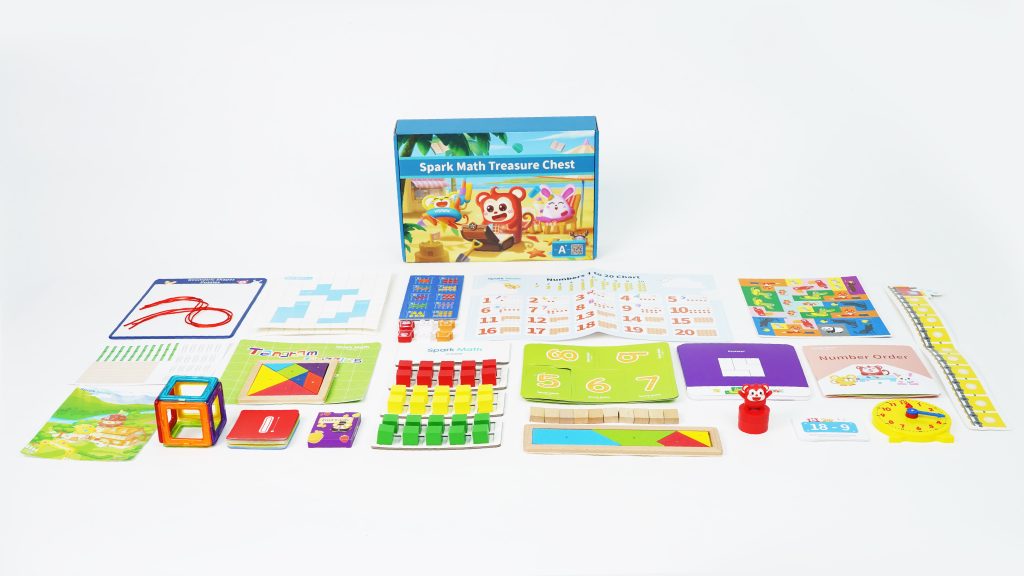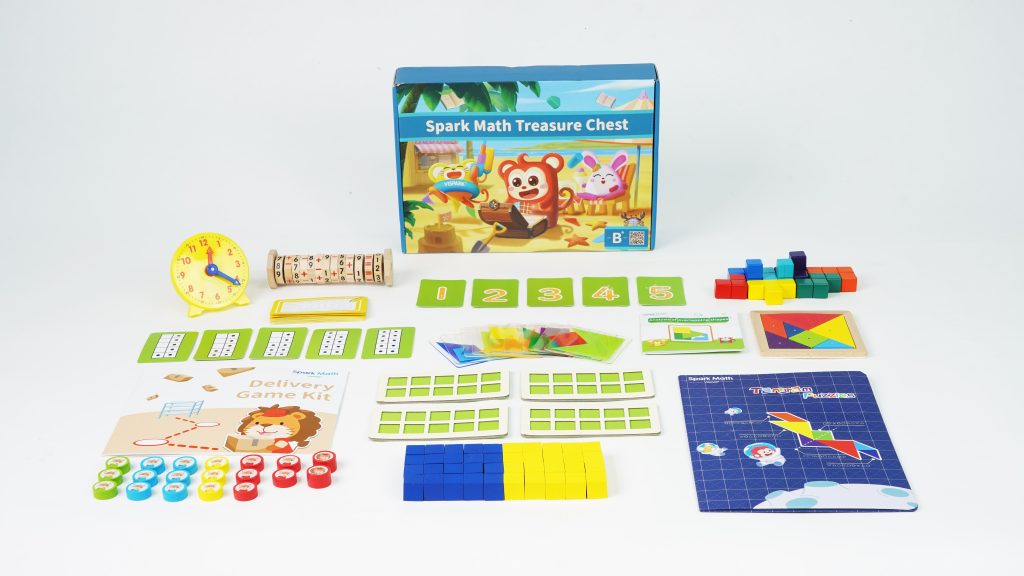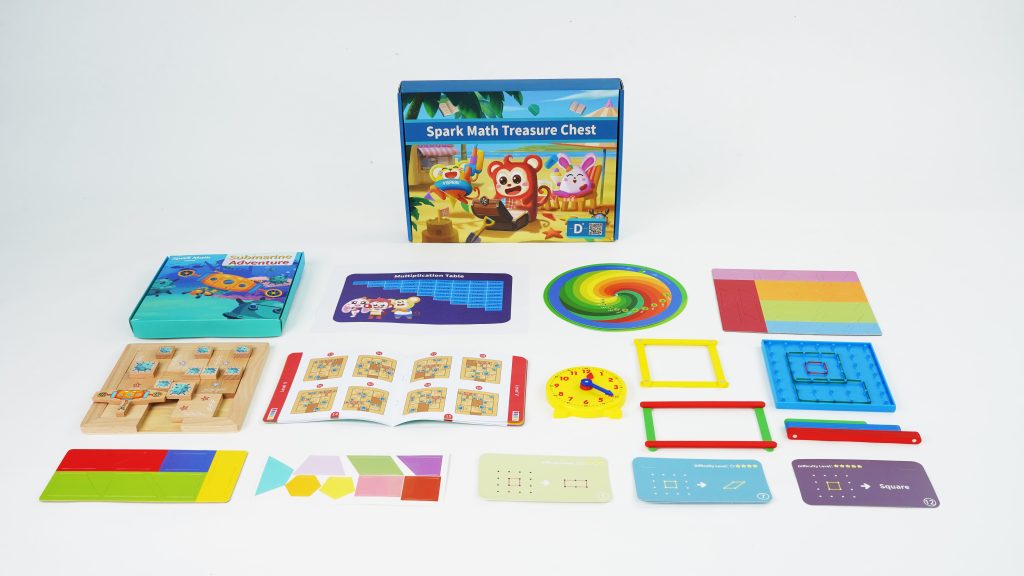In today’s rapidly changing world, problem-solving skills have become essential for children. These skills enable them to navigate challenges, think critically, and develop creative solutions. Whether it’s solving a math problem, working on a group project, or dealing with everyday situations, the ability to solve problems effectively can set children up for success in school and life. The following 20 problem-solving activities are designed to help children enhance their problem-solving abilities and critical thinking skills, fostering self-reliance and independent thinking while promoting collaboration and communication skills. These activities are suitable for parents and teachers looking to incorporate fun and educational problem-solving exercises into their daily routines.
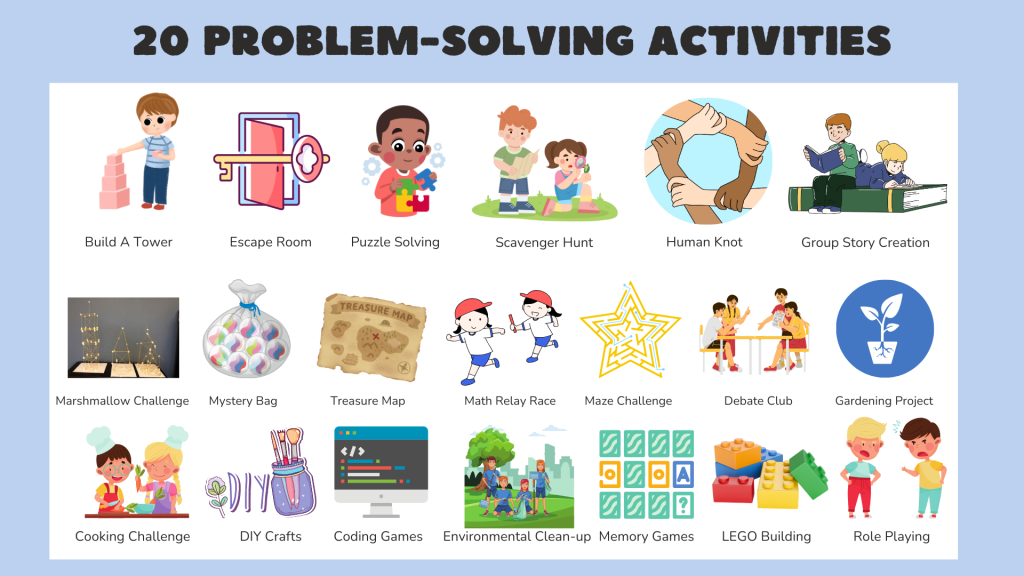
1. Build A Tower
Location: Home or Classroom
Format: Individual or Team
Description: This activity challenges children to build the tallest tower possible using materials like blocks, straws, or recycled items. The goal is to encourage creativity, planning, and structural understanding.
How to conduct the activity:
- Provide a variety of building materials such as blocks, straws, cardboard, and tape.
- Set a time limit for the activity (e.g., 20 minutes).
- Allow children to work individually or in teams to build their towers.
- After the time is up, measure the height of each tower and discuss the design choices and challenges faced during construction.
2. Escape Room Challenge
Location: Classroom
Format: Team
Description: In this activity, children must work together to solve puzzles and clues to “escape” from a locked room scenario. This promotes critical thinking, teamwork, and logical reasoning.
How to conduct the activity:
- Set up a room with various puzzles and clues that lead to the final solution (e.g., finding a key or a code).
- Divide the children into small teams.
- Provide an initial clue to start the challenge.
- Allow teams to work together to solve each puzzle within a set time limit (e.g., 30 minutes).
- Facilitate a discussion after the activity to reflect on the strategies used and the importance of teamwork and communication.
3. Puzzle Solving
Location: Home or Classroom
Format: Individual or Team
Description: Engaging in jigsaw puzzles or logic puzzles helps improve problem-solving skills by challenging children to think critically and find solutions to complex problems.
How to conduct the activity:
- Provide a variety of puzzles, such as jigsaw puzzles, crossword puzzles, or Sudoku.
- Allow children to choose a puzzle and set a time limit for completing it.
- If done in teams, encourage collaboration and discussion to solve the puzzle together.
- After completing the puzzles, discuss the strategies used and any challenges faced during the activity.
4. Team Scavenger Hunt
Location: Outdoor or Indoor
Format: Team
Description: In this activity, teams work together to find items on a list within a set time. This promotes teamwork, communication, and strategic thinking.
How to conduct the activity:
- Create a list of items for the scavenger hunt (e.g., a red leaf, a feather, a specific book).
- Divide the children into small teams.
- Set a time limit for the hunt (e.g., 30 minutes).
- Provide the list to each team and allow them to search for the items.
- The team that finds the most items or completes the list first wins.
- Discuss the strategies used by the teams and the importance of communication and cooperation.
5. Human Knot
Location: Indoor or Outdoor
Format: Team
Description: Teams must untangle themselves without letting go of each other’s hands. This activity fosters teamwork, communication, and problem-solving under physical constraints.
How to conduct the activity:
- Have the children stand in a circle and hold hands with two different people across from them, creating a human knot.
- The goal is to untangle the knot without letting go of each other’s hands.
- Allow the teams to communicate and work together to find a solution.
- If the knot becomes too difficult, allow for a strategic pause to discuss the next moves.
- After untangling, discuss what strategies worked best and the importance of clear communication and teamwork.
6. Group Story Creation
Location: Classroom
Format: Team
Description: Each team member adds a sentence to a story, promoting creativity, collaboration, and logical progression in storytelling.
How to conduct the activity:
- Divide the children into small teams.
- Start with a simple opening sentence for a story.
- Each team member adds a sentence to the story, taking turns.
- Continue until the story reaches a natural conclusion or set a limit for the number of sentences.
- Share the stories with the entire group and discuss the creative process and the importance of building on each other’s ideas.
7. Marshmallow Challenge
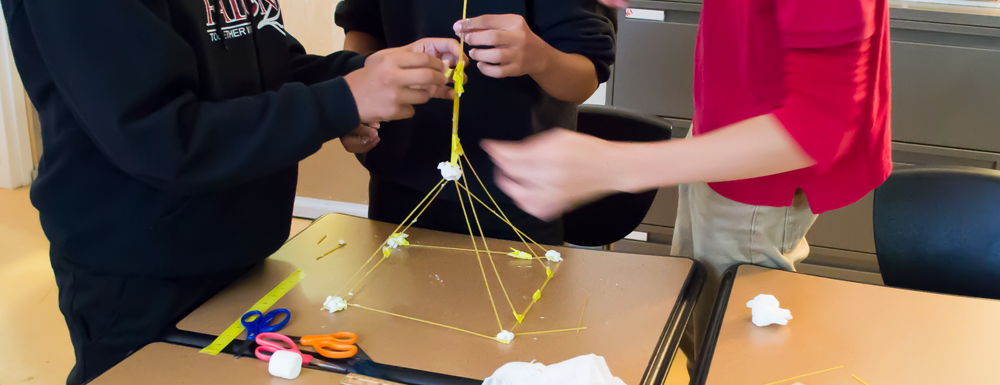
Location: Classroom or Camp
Format: Team
Description: Teams are challenged to build the tallest structure possible using spaghetti, tape, and a marshmallow. This activity encourages creativity, planning, and structural understanding.
How to conduct the activity:
- Provide each team with 20 sticks of spaghetti, one yard of tape, one yard of string, and one marshmallow.
- Set a time limit (e.g., 18 minutes) for building the structure.
- The goal is to build the tallest free-standing structure with the marshmallow on top.
- After the time is up, measure the height of each structure.
- Discuss the different approaches used by each team, the challenges they faced, and what they learned about structural integrity and teamwork.
8. Mystery Bags
Location: Home or Classroom
Format: Individual or Team
Description: Using their sense of touch, children guess the items inside mystery bags, enhancing sensory perception and deductive reasoning.
How to conduct the activity:
- Fill several bags with different objects.
- Children can ask yes/no questions or work in teams to identify the objects.
- Set a time limit for each guess.
- Discuss the process and strategies used to identify the items, emphasizing the importance of sensory skills and logical deduction.
9. Treasure Maps
Location: Outdoor or Indoor
Format: Team
Description: Following a treasure map with clues and landmarks helps children develop navigation skills, critical thinking, and teamwork.
How to conduct the activity:
- Draw a detailed treasure map with clues and landmarks.
- Hide a “treasure” (e.g., a small toy or treat) at a specific location.
- Divide the children into teams and give each team a copy of the map.
- Set a time limit for finding the treasure by solving riddles and completing tasks.
- After the activity, discuss the strategies used, the importance of following directions, and how well the teams worked together.
10. Math Relay Race
Location: Classroom or Outdoor
Format: Team
Description: Combining physical activity with problem-solving, children solve math problems at each station of a relay race.
How to conduct the activity:
- Set up a relay race course with stations, each featuring a different math problem.
- Divide the children into teams.
- Each team member must solve a math problem before running to the next station.
- The first team to complete all the problems and cross the finish line wins.
- Discuss the importance of both physical activity and mental agility in problem-solving.
11. Maze Challenges
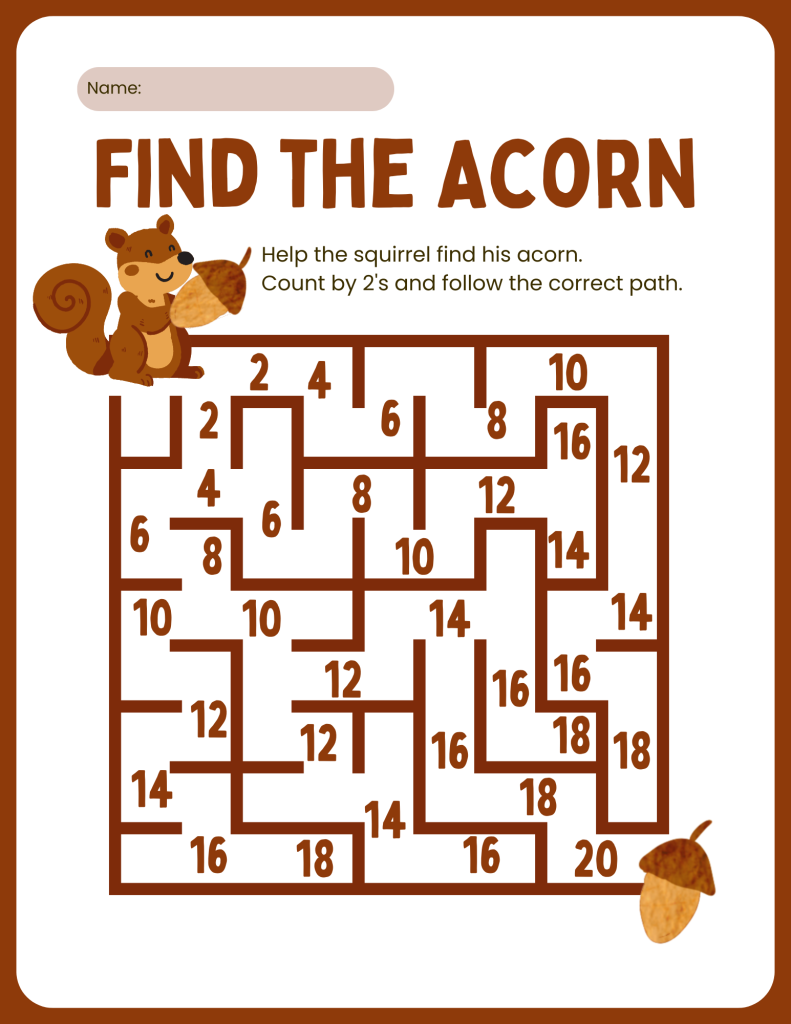
Location: Home, Classroom, or Outdoor
Format: Individual or Team
Description: Solving mazes, either on paper or physically constructed, develops spatial awareness and strategic planning.
How to conduct the activity:
- Provide printed mazes or set up a physical maze using string or tape.
- Children must find the correct path from start to finish.
- If done in teams, allow them to strategize together.
- Set a time limit for the activity.
- After completing the maze, discuss the strategies used and the importance of planning and spatial awareness.
12. Debate Club
Location: Classroom
Format: Team
Description: Engaging in structured debates on various topics helps children improve logical reasoning, communication, and persuasion skills.
How to conduct the activity:
- Choose a relevant and age-appropriate topic for debate.
- Divide the children into two teams, assigning each team a position (for or against).
- Allow time for the teams to research and prepare their arguments.
- Conduct the debate, giving each team equal time to present their points and rebuttals.
- After the debate, facilitate a discussion on the importance of logical reasoning, effective communication, and respecting differing viewpoints.
13. Gardening Project
Location: Garden or Outdoor Area
Format: Individual or Team
Description: Planning and maintaining a garden teaches children about ecosystems, responsibility, and problem-solving in a practical, hands-on way.
How to conduct the activity:
- Choose a suitable outdoor area for the garden.
- Provide gardening tools, seeds, and plants.
- Allow children to plan the garden layout, decide what to plant, and how to care for the plants.
- Encourage them to work individually or in teams to plant and maintain the garden.
- Over time, have the children observe the growth and troubleshoot any issues (e.g., pests, watering schedules).
- Discuss the lessons learned about responsibility, environmental stewardship, and problem-solving.
14. Cooking Challenge
Location: Kitchen
Format: Team
Description: Following a recipe or creating a dish with limited ingredients encourages creativity, planning, and practical problem-solving.
How to conduct the activity:
- Provide a selection of ingredients and basic kitchen tools.
- Divide the children into teams and either provide a recipe or challenge them to create a dish using the available ingredients.
- Set a time limit for planning and cooking.
- After the dishes are prepared, have a taste test and discuss the process, challenges faced, and solutions found.
- Highlight the importance of following instructions, time management, and teamwork.
15. DIY Crafts
Location: Home or Classroom
Format: Individual or Team
Description: Creating crafts from various materials encourages creativity, fine motor skills, and problem-solving as children figure out how to bring their ideas to life.
How to conduct the activity:
- Provide a variety of crafting materials (paper, glue, scissors, markers, recycled items).
- Allow children to choose a craft project or give them a specific challenge (e.g., create an animal, design a greeting card).
- Let them work individually or in teams to complete the project.
- Afterward, display the crafts and have a discussion about the creative process, any difficulties encountered, and how they were resolved.
16. Coding Games
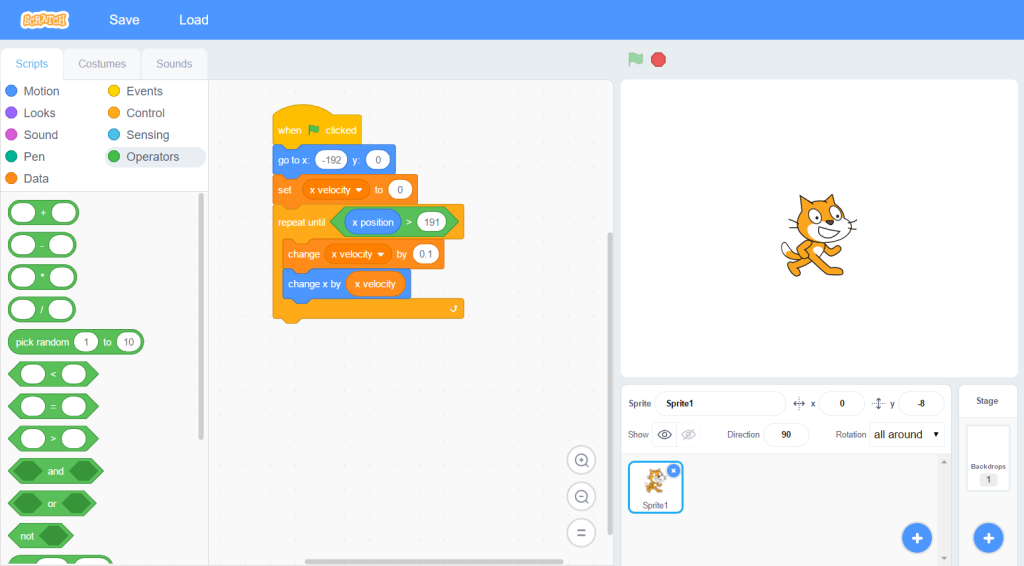
Location: Home or Classroom
Format: Individual or Team
Description: Using simple coding games or apps like Scratch, children create animations or solve coding challenges, enhancing their logical thinking and programming skills.
How to conduct the activity:
- Introduce children to basic coding concepts using apps like Scratch.
- Provide a set of challenges or allow them to create their own animations.
- Encourage them to work individually or in teams.
- After completing the coding tasks, have a showcase to demonstrate their projects.
- Discuss the problem-solving strategies used in coding and the importance of logical thinking.
17. Environmental Clean-up
Location: Outdoor
Format: Team
Description: Planning and executing a local clean-up project teaches children about environmental stewardship, teamwork, and community problem-solving.
How to conduct the activity:
- Identify a local area that needs cleaning (e.g., a park, beach, or school grounds).
- Provide cleaning supplies such as gloves, trash bags, and recycling bins.
- Divide the children into teams and assign specific areas or tasks to each team.
- Set a time limit for the clean-up activity.
- After the clean-up, discuss the importance of environmental responsibility, teamwork, and the impact of their efforts on the community.
18. Memory Games
Location: Home or Classroom
Format: Individual or Team
Description: Playing memory games improves children’s concentration and problem-solving skills by challenging them to remember sequences of objects, numbers, or images.
How to conduct the activity:
- Set up a memory game with cards or objects arranged in a specific order.
- Allow children to study the sequence for a short time, then cover or shuffle the items.
- Challenge them to recall the sequence correctly.
- If done in teams, encourage them to discuss and strategize together.
- Discuss the importance of concentration and memory in problem-solving.
19. LEGO Building
Location: Home or Classroom
Format: Individual or Team
Description: Building structures or solving building challenges using LEGO bricks encourages creativity, planning, and engineering problem-solving.
How to conduct the activity:
- Provide a variety of LEGO bricks and building accessories.
- Give children specific building challenges (e.g., build a bridge that can hold a certain weight, create a model of a famous landmark).
- Allow them to work individually or in teams to complete the challenge.
- After the building time, showcase the creations and discuss the design choices, challenges faced, and problem-solving techniques used.
- Highlight the importance of creativity, planning, and structural integrity.
20. Role-playing Scenarios
Location: Classroom or Drama Club
Format: Team
Description: Acting out scenarios that require quick thinking and problem-solving helps children develop communication, empathy, and decision-making skills.
How to conduct the activity:
- Create a series of role-playing scenarios that involve common problems or conflicts (e.g., resolving a disagreement, planning an event, responding to an emergency).
- Divide the children into teams and assign each team a scenario.
- Allow time for the teams to discuss and plan their response to the scenario.
- Have each team act out their scenario in front of the group.
- After each performance, discuss the problem-solving approaches used, the effectiveness of the communication, and what could be improved.
Supporting your child’s problem-solving development can be both fun and easy. Spark Math by Spark Education offers interactive lessons and animated explanations for children ages 4-11, designed to enhance critical thinking skills. Our program includes a variety of learning tools such as tangrams, maze maps, Rubik’s cubes, and building blocks to make learning more effective and enjoyable. These tools are integrated into our lessons to help children improve their problem-solving abilities. Sign up for a FREE trial class to experience Spark Math today!
